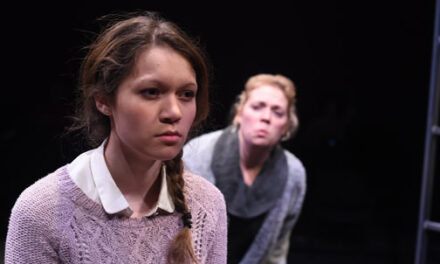Despite ACC basketball finals and St. Patrick’s Day revels outside the Belk Theater in the Blumenthal Performing Arts Center, a good house was on hand to bask in an evening with the Charlotte Symphony‘s guest artist, conductor, and orchestra, all performing at their best. This concert was eagerly anticipated not only because of music director Christof Perick’s strength in the German repertory, especially the works of Richard Strauss, but also because of the unusual level of maturity violinist Augustin Hadelich had brought to the Glazunov on the Greensboro Symphony series.
The Violin Concerto in D Major, Op. 61, by Ludwig Van Beethoven (1770-1827), is heard so often its radical elements are frequently overlooked. It stands in stark contrast to the standard form of the concerto such as that used by Mozart. A flowery orchestral introduction is eschewed. Five soft timpani taps open the work, establishing not only the key and rhythm of the movement but also serving as a recurring, unifying phrase throughout. The violin’s wide-ranging figurations and interjections are set against the orchestra’s development of the melody. Only after the violin’s cadenza (in this case, by Fritz Kreisler) does the soloist fully take up the orchestra’s melody. This portion of the conclusion of the first movement is magically mirrored in the composer’s transition from the ethereal Larghetto to the spirited finale.
After a tragic accident that caused very serious burns, Hadelich overcame extensive surgeries and rehabilitation in time to win the Gold Medal of the 2006 International Violin Competition of Indianapolis. Every arrow of a virtuoso’s quiver was evident throughout Hadelich’s immaculate performance — dead-centered intonation, refined control of color and dynamics, and crystal-clear string articulation. His golden, marvelously light tone was wedded to phrasing of profound subtlety. As an encore, he seemed effortlessly to toss off Paganini’s Caprice No. 9.
Richard Strauss (1864-1949) took the orchestral tone poem, created by Berlioz and refined by Liszt, to the height of its development. “Death and Transfiguration,” Op. 24, was finished in time for the composer’s 26th birthday. He wanted to compose a tone poem describing the last hours of an artist who had striven for the highest ideals. It is in four seamless parts. The opening largo depicts the sick room and introduces the rhythm of the dying man’s heart. The second movement evokes the vigorous struggle between Death and the drive to live. The third movement serves as a flashback of the dying man’s past life. The finale builds to the blazing theme of transfiguration.
“Till Eulenspiegel’s Merry Pranks,” Op. 28, portrays the impish antics and ultimate hanging of the well-known character in German folklore. The gentle opening is the musical equivalent of “once upon a time.” Till’s first theme, a technically-difficult four-octave romp across the French horn’s register, is followed by Till’s second motive, a rascally sneer in the clarinet.
The high level of musicianship Perick has instilled in his players was vividly on display throughout both works. Every graduation of dynamics was instantly adjusted. Every section was in lock step, playing as one. Perick balanced the sections perfectly and was able to bring flair to his musicians’ playing. The richness of string tone and the sequential joining of the five horns in turn in Opus 24 were striking. The woodwinds were excellent in both works. Principal Horn Frank Portone’s Opus 28 Till solo was superb, as was Drucilla DeVan’s portrayal of the end of Till by hanging — his strangled end was embodied in sounds from her E-flat clarinet. Both works have strongly contrasted violin solos that were delivered with vivid characterizations by Concertmaster Calin Ovidiu Lupanu. Perick’s brilliant way with Strauss will be missed; it set the bar high for his successor.
The 2007-8 season will mark violinist Hadelich’s professional recording debut with three CDs: the complete solo fantasies of Telemann and the complete violin concertos of Haydn, both for Naxos, and a recital CD with pianist Robert Kulek, to be issued on the award-winning Avie label.
Incidentally, Beethoven arranged the Violin Concerto for piano and composed a cadenza for it. Max Rostal in turn arranged this for violin, and Oscar Shumsky uses it in his recording of the Violin Concerto on the ASV label. Wolfgang Schneiderhan used his own adaptation for his DGG recording. Naxos has a recording of Beethoven’s piano arrangement of the Violin Concerto.











